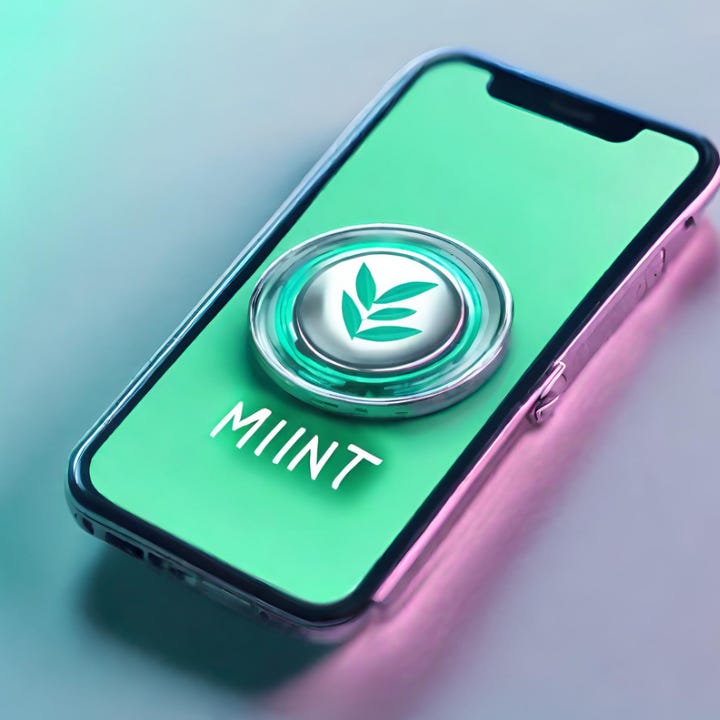The Post-Mint Problem
What comes after the mint? Some thoughts on adding more utility to NFTs.
One of the core issues that consumer NFT applications face is what I call the “post-mint problem.” Most NFT apps focus on getting the user to mint the NFT. Very few focus on what comes after the mint.
To date, most apps provide post-mint utility through:
Status/patronage: social value is relative, but like luxury goods, crypto art and high-social-status PFPs typically come at a high price. This is fine, but it's hard to replicate this type of utility because, by definition, the value comes from the NFT’s exclusivity.
Exclusive membership: many NFT apps have converged around exclusive membership—own the NFT, get access to this cool group. For the vibes, the alpha, whatever. But exclusivity doesn’t scale and there are diminishing returns once some threshold is reached.
Rewards: while rewards help keep people engaged, introducing new assets (e.g. fungible tokens) or NFTs further complicates the utility offered by the original NFTs. It leads to more competing assets, each with a need to provide some level of utility to the end holder/consumer.
Experiential/consumptive utility: NFTs possess specific utility within a game or app. TCGs (trading card games), game assets (e.g. armor), avatar (e.g. in Reddit), or fantasy sports (e.g. DraftKings) — in-app utility can be a great mechanism for post-mint utility.
There’s a similar flaw among three of these broad categories: Status, exclusive memberships, and rewards. Those are all great psychological and financial drivers, but they often have the flaw that they don’t scale to millions of users.
NFTs need more post-mint utility.
Solving the Post-Mint Problem
Where do we go next? I’d like to see less focus on scarcity, more on utility. Scarcity works for art but isn’t the right value prop for consumer apps where distribution is the goal.
Instead, apps should focus on app-specific utility to solve the post-mint problem. The next generation of consumer apps need to be more opinionated about the post-mint experience. Simply collecting and displaying isn’t enough—NFTs should have specific purposes within an application or be complementary to the core app experience.
There will of course be new business models invented by crypto projects, but it’s perhaps also worth considering how we can adapt NFTs to existing business models.
Crypto consumer apps can borrow from existing business models:
Scalable NFT memberships where more members means a better product. Blackbird membership NFTs can dynamically update with users' visits, loyalty tier, etc.
Subscription NFTs where NFTs still hold user data/social value but require recurring payments to use a platform (e.g. Spotify, Strava). Stepn pioneered degradable NFTs that were utility driven. There’s potential to leverage a degradable NFT into a freemium or subscription model.
Consumptive NFTs, which are one-time usage NFTs for tickets, gift cards, and experiences. There are new models to be tested by combining other primitives like bonding curves (e.g. Groupon with a bonding curve, where early buyers get a reduced price).
Aesthetics/scalable status, such as with Reddit’s avatars, which offer NFT scarcity but not in a manner that negatively impacts the app experience. Similarly, new standards like 6551 further enable these types of avatar NFTs that can own and use digital goods.
Okay, but where’s the new utility and use cases?
Bridging physical and digital experience: NFC chips and location based activations can all provide better phygital experiences. Bringing real-world consumer assets onchain can increase their liquidity and enable experiences built on top of these assets (e.g. fantasy sports NFTs).
Beyond collecting: collecting is cool, but it’s game-changing when the content is engaging or has some post-mint experience or function. DraftKings, Sorare, et al are examples of how building games using the collectibles potentially enhances the collectible value.
Rev share and financial value: NFTs tied to financial/rev value will have immediate utility and more sustainable models (e.g. Pudgy Penguins merch)
Bringing NFTs into new distribution channels: Telegram bots, MetaMask Snaps, and web3 messaging are new distribution channels ripe for experimentation. Bootstrapping consumer apps is hard. Successful consumer apps often leverage new channels (e.g. internet, mobile, social media, Ethereum).
Apps that are opinionated about the post-mint experience will be poised for the greatest success because they’ll drive continued usage and value to the NFT and users.
If you’re building apps with opinionated consumer experiences that solve the post-mint problem, reach out!




Hi Mason, I always enjoy reading your articles😆.
You should have a look at these:
ERC-5169: https://eips.ethereum.org/EIPS/eip-5169
TokenScript: https://github.com/TokenScript/TokenScript
An ERC-5169 and TokenScript enabled NFT example: https://youtu.be/u0wRpkx1bUw
Cheers